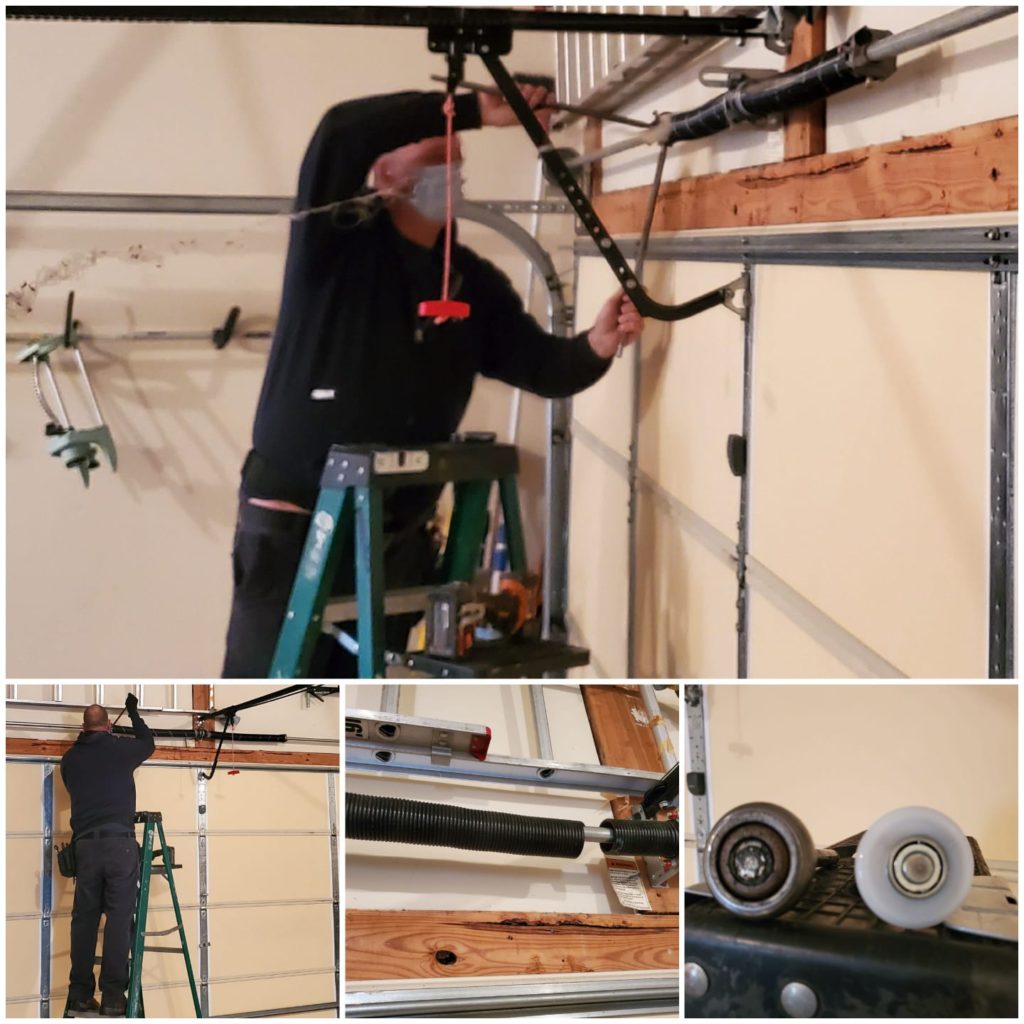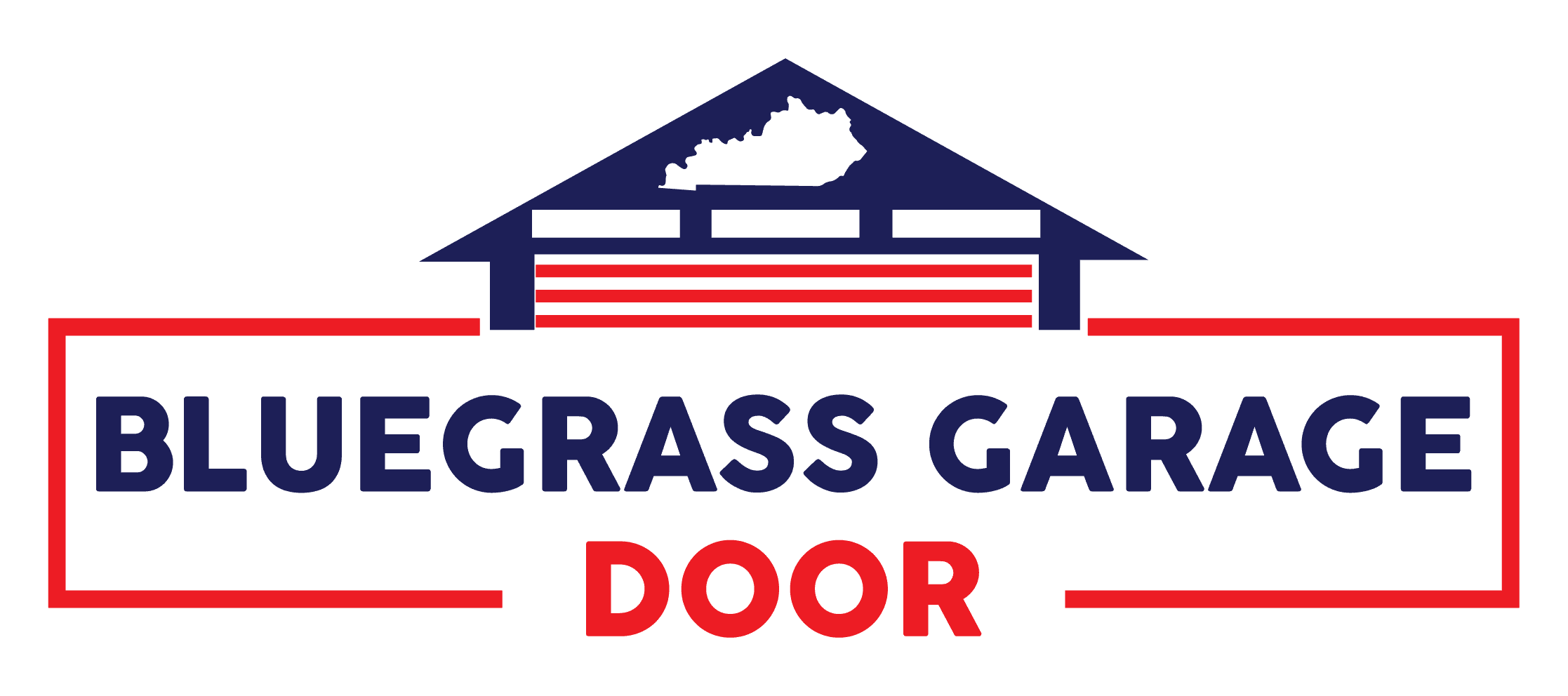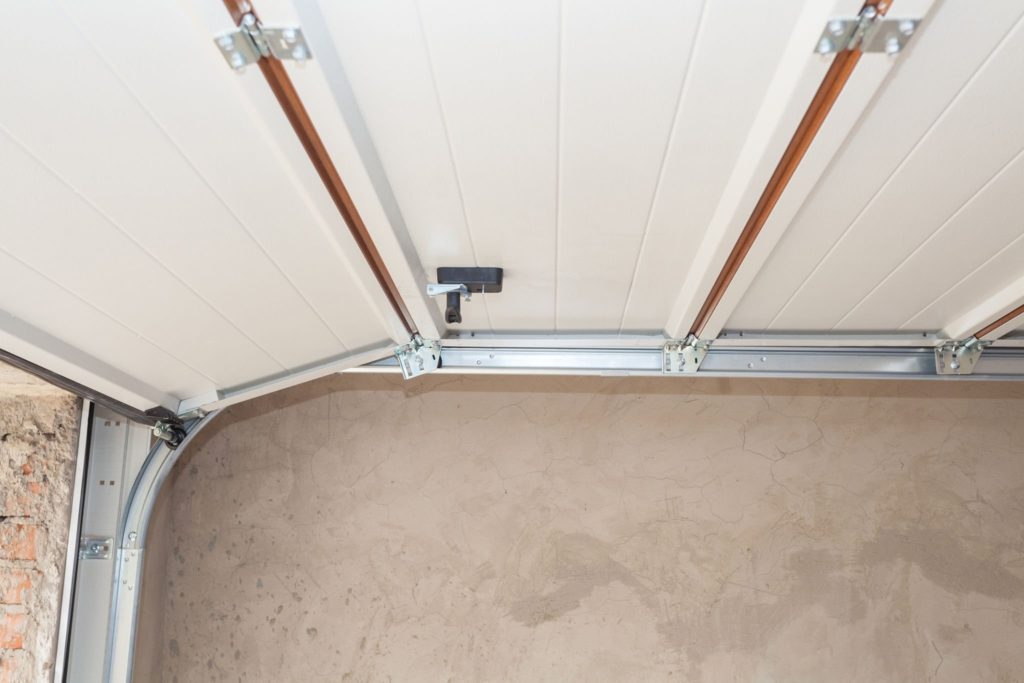You probably use your garage door daily if you own your own home. Until something goes wrong, you might not even think about it. A garage door that works well is essential so that you can park your car easily and for safety reasons. Extension springs are essential to a garage door’s complex system that ensures it works smoothly and safely.
Extension springs are on both sides of the garage door track. They help lift and lower the door by stretching and tightening. Because they are so important, choosing the right type of springs for your garage door system is crucial.
In this blog post, we’ll talk about the pros and cons of garage door extension springs, which will help you decide if they’re the right choice for you. Our review is based on several factors, such as safety, cost, durability, and how hard it is to install. This gives you a balanced look at this important garage door part.
Stay tuned as we break down the details of garage door extension springs so you can make an informed decision about your garage door system. So, let’s look at the pros and cons of this seemingly simple but crucial part of your home’s system.
What are Extension Springs?
Extension springs are an essential component of garage doors, often overlooked yet vital in its efficient and smooth operation. These springs function under the fundamental principle of extension and tension. They extend or stretch to provide the necessary force to close and open the garage door effectively.
A garage door extension spring is typically located along the horizontal tracks on each side of the garage door system. They’re attached to the garage door at one end, and the other end is secured to the door tracks. When the garage door is in the closed position, the springs are at their most extended state, under maximum tension. As the door is raised, the springs contract, helping to lift the door by releasing the stored tension.
Benefits of Using Extension Springs for Garage Doors
Extension springs, one of the two primary spring types for garage doors (the other being torsion springs), offer several distinct advantages. Here are some of the benefits:
- Cost-Effective: Extension springs are generally less expensive than torsion springs’ counterparts. This makes them a popular choice for residential garage doors, particularly for homeowners on a budget.
- Versatility: Extension springs are suitable for a wide range of garage doors, especially those that are lighter and smaller. They can be installed in varying sizes and strengths, tailored to the weight and size of the door.
- Simple Installation Process: The installation process for extension springs is fairly straightforward, making it quicker and easier for professionals to install them. This can also reduce the cost of installation.
- Availability: Extension springs are readily available in most hardware stores due to their widespread use. This means replacements can usually be found quickly.
- Independent Operation: Each extension spring operates independently, attached to either side of the garage door. In case one spring breaks, the other spring can still provide some functionality to the door, allowing it to open or close partially. This is different from torsion springs, where the failure of the spring can completely halt the garage door’s operation.
- Convenient for Small Spaces: Extension springs are ideal for garages with limited headroom because they operate along the horizontal track, unlike torsion springs installed above the door’s opening.
Despite these benefits, it’s essential to remember that extension springs operate under high tension, making them potentially dangerous if not properly maintained or if they break. For this reason, safety cables are typically installed with extension springs to contain the spring in case of breakage. As with any high-tension mechanical system, professional installation and regular maintenance are key to safe and effective operation.
The Different Types of Extension Springs for Garage Doors
Extension springs for garage doors come in various types, mainly distinguished by their end designs. These end designs are crucial in how the spring attaches to the garage door mechanism. The three most common types of extension springs are:
- Open-Looped Extension Springs: This type of spring has a loop or eye at the end where it attaches to the pulley and track. One advantage of open-looped extension springs is that if the pulley or cable breaks, you can replace one component rather than the entire spring. However, it’s important to note that the durability of this spring type largely depends on the strength of the loop.
- Double-Looped Extension Springs: Double-looped springs have two loops, one at each end, for attachment to the pulley system and the track. This double-loop design offers more durability and strength than open-looped springs because it evenly distributes the stress.
- Clipped Ends Extension Springs: This extension spring has unique clips at the ends for attaching to the pulley system and the track. Clipped-end springs are considered the most durable of the three types, and they can handle more tension than other extension springs. This makes them ideal for heavier garage doors.
The kind of extension spring you need for your garage door depends on several factors, including the weight and size of the door and the existing garage door system. Always consult a professional when choosing an extension spring to ensure it’s appropriate for your needs. Regardless of the type, all extension springs should be regularly inspected and replaced when necessary to maintain the efficiency and safety of your garage door.

Pros and Cons of Extension Springs
Garage door extension springs are crucial to many residential garage door systems. Like any other component, they have their own set of advantages and drawbacks. Understanding these pros and cons can help you decide whether extension springs are the right choice for your garage door.
Pros of Garage Door Extension Springs:
- Cost-Effective
Garage door extension springs are generally less expensive than torsion springs. They offer a cost-efficient solution for homeowners looking for quality and functionality at a lower price.
- Versatility
Extension springs are suitable for various garage door weights and sizes, making them a flexible choice for many different types of residential garage doors.
- Availability and Replacement
Extension springs are widely used and, therefore, readily available at most hardware stores. If one spring breaks, you can replace it without needing to change the other if it’s still in good condition.
- Partial Functionality
Since extension springs operate independently on each side of the door, if one breaks, the other can still function. This can allow for limited garage door use until repairs can be made.
Cons of Garage Door Extension Springs:
- Safety Concerns
Extension springs are under high tension; if they break, they can cause injuries or damage property if safety cables are not installed. For this reason, extension springs must be installed with safety cables that can contain the spring if it breaks.
- Shorter Lifespan
Compared to torsion springs, extension springs usually have a shorter lifespan. While the lifespan can vary depending on usage, a typical extension spring lasts for around 10,000 cycles.
- Imbalanced Door Operation
Extension springs can sometimes result in an imbalanced door since they operate independently. If one spring weakens faster than the other, it may cause the door to open and close unevenly.
- Regular Maintenance
Extension springs require regular maintenance checks due to their high-tension nature. Failing to do so might lead to a broken spring, which can cause further damage to the garage door system.
- Space Requirements
Extension springs require more side room, installed along the horizontal track on either side of the door. This can be a limitation in some garages with tight spaces.
While DIY solutions can be tempting, working with high-tension components like extension springs can be dangerous. It’s usually best to consult a garage door professional for installation and maintenance tasks to ensure safety.
How to Choose the Right Extension Spring
Choosing the right extension spring for your garage door is a crucial task. An improperly matched spring can lead to issues with the operation of your door and may even pose a safety risk. Here’s a guide to help you select the correct extension spring:
- Weight of the Door: The importance of your garage door is the most crucial factor to consider when choosing an extension spring. The spring must be strong enough to counterbalance the weight of the door. Usually, you can find the importance of the door from the manufacturer’s specifications, or it can be measured using a specific scale designed for garage doors.
- Size of the Door: The size of your garage door also plays a role in determining the right spring. You need to know the height and width of the door. Higher and broader doors generally require stronger springs due to the larger area they lift and lower.
- Life Cycle: Consider how often you use your garage door. If you use your door frequently, you’ll want a spring with a higher cycle rating to ensure a longer lifespan. A cycle is one complete action of opening and closing the garage door.
- Type of Door: The type of door also affects the choice of extension spring. Is your door a one-piece tilt-up door, a sectional door, or a custom door? Different types of doors have different balance characteristics and may require other springs.
- Spring Length: Extension springs come in a variety of lengths. The right size usually depends on the height of your garage door. Typically, the spring should be slightly stretched when the door is in the open position. Check your springs or consult a professional to determine the right length.
- Spring Diameter: The inside diameter of the spring is another essential measurement. This must match the pulleys and other hardware on your garage door system. This measurement can often be found on the existing springs, or it can be measured directly.
- Safety Cables: Although not part of the spring, installing safety cables with extension springs is essential. These cables help contain the spring if it breaks, preventing it from causing damage or injury.
Remember, garage door springs operate under high tension, making them potentially dangerous. Although knowing what to look for can help you understand what kind of spring you need, the installation and adjustment of garage door springs should be left to professionals to ensure safety and proper operation.
Extension Spring Maintenance
Garage door extension springs, like any part of a mechanical system, require regular maintenance to ensure they work efficiently and safely. Here are some of the best maintenance practices for garage door extension springs:
- Regular Inspection: Regularly inspect your garage door extension springs for signs of wear and tear. Look for any gaps between the coils, rust, or uneven stretching. These could be indications that your springs are nearing the end of their lifespan.
- Lubrication: Apply a high-quality garage door lubricant to the springs at least twice a year. This can help reduce friction when the door operates and prolong the springs’ lifespan. Be careful not to over-lubricate, as excess lubricant can attract dust and dirt.
- Check the Balance: Regularly check the balance of your garage door. To do this, disconnect the garage door opener and manually lift the door halfway. If the door stays in place, the springs are correctly balanced. If the door begins to fall, the springs may be worn and need adjustment or replacement.
- Safety Cables: Ensure safety cables are correctly installed and in good condition. These cables run through the spring and are designed to contain the spring if it breaks, preventing it from causing damage or injury.
- Listen for Noises: When operating your garage door, listen for any unusual noises. Squeaking or grinding noises could indicate that the springs are worn or improperly lubricated.
- Professional Inspection: Have your garage door system inspected at least once a year. A garage door professional can identify any issues that may not be apparent to the untrained eye and ensure that your door operates safely and efficiently.
Remember, extension springs are under high tension and potentially dangerous. While basic maintenance tasks like lubrication and visual inspection can be done yourself, any adjustments or replacements should be left to a professional to ensure safety. A broken spring can release suddenly, causing severe injury or damage. Always prioritize safety when dealing with high-tension garage door components.
Conclusion
In the end, there is no one-size-fits-all conclusion regarding extension springs for your garage door. Each situation and need is unique, requiring careful consideration and assessment.
Extension springs offer many benefits, such as their ability to provide balanced tension, flexibility in design options, and cost-effectiveness. However, if improperly handled, they also have drawbacks, like limited lifespan and potential safety hazards.
Choosing the right extension spring for your garage door involves understanding weight capacity, dimensions, and material type. Regular maintenance is essential to ensure optimal performance and longevity.
The practical applications of extension springs are vast – from residential garage doors to industrial machinery. They play a crucial role in providing smooth operation and support.
Safety measures should be taken seriously to prevent accidents or injuries when handling extension springs. Following proper installation guidelines and seeking professional assistance if needed is essential.
Although extension springs have a finite lifespan due to wear and tear, their durability can be extended through proper care and maintenance.
To ensure the best outcome for your garage door needs involving extension springs – whether it’s repair or replacement – it’s always wise to consult with trusted professionals with expertise in this field.
So remember: when considering extension springs for your garage door needs in Louisville, KY and surrounding areas, choose Bluegrass Garage Doors – the experts you can trust!
Choose Bluegrass Garage Doors, Louisville, KY’s trusted garage door company!
Regarding important components like extension springs for your garage doors, ensure you get nothing but the best. These springs play a pivotal role in offering support and balance to your door, but they do come with their pros and cons. Hence, it’s essential to understand your specific requirements before deciding.
As these springs operate under high tension, safety is of paramount importance. Regular maintenance is another essential aspect that ensures their efficient functioning and longevity.
However, when it comes to installing or replacing extension springs, professional intervention is strongly advised. This is where Bluegrass Garage Doors steps in.
Bluegrass Garage Doors, a renowned garage door company based in Louisville, KY, has earned its reputation through years of delivering superior quality products and unparalleled service to homeowners. Their expertise in garage door systems allows them to guide you in choosing the most suitable extension spring tailored to your needs.
Avoid the uncertainties associated with DIY installations or defective products. Opt for Bluegrass Garage Doors today for trustworthy garage door services in Louisville, KY that guarantee your garage door’s seamless and secure operation for the long run.
For all your garage door needs, especially when it comes to extension springs, place your trust in Bluegrass Garage Doors!

